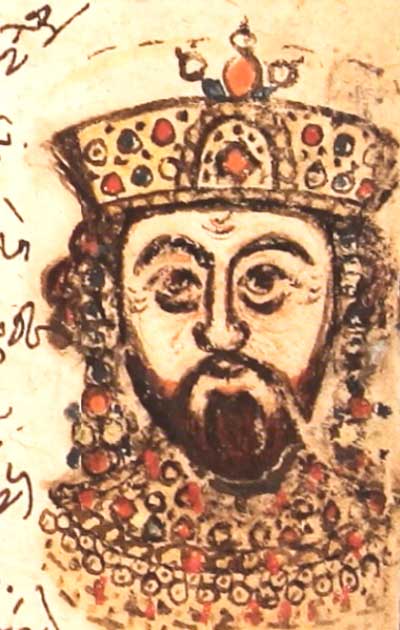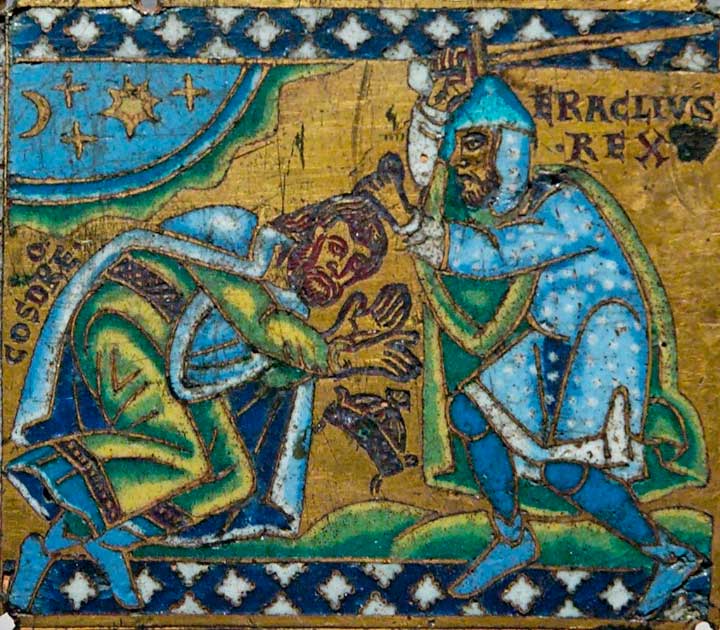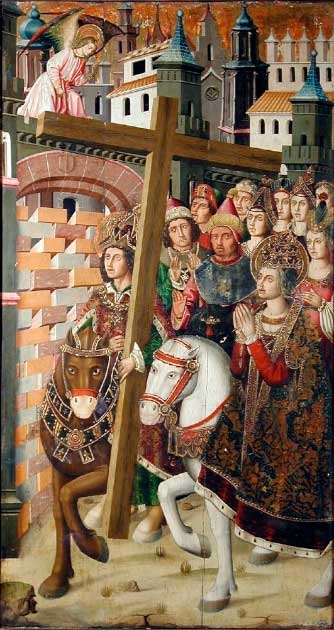The Roman Empire lasted far longer than most realize. Rome herself and the Western portion of the empire may have fallen to the Goths in 476 AD, but the eastern portion survived for many more centuries based around its capital of Constantinople.
This is not to say that the Eastern Roman Empire stood inviolate, but a series of great leaders and generals ensured that the Romans endured. Some, like Justinian and his great general Belisarius, faced catastrophe and turned it to their advantage. And some, like Heraclius, took the fight to the enemy.
Heraclius I was emperor when the Eastern Roman Empire was at its peak. The son of Heraclius the Elder, he reigned from 610 to 641. The reign of Heraclius was marked by many successful military campaigns, as he stepped onto the throne when the Roman Empire was threatened by many external and internal factors.
Yet, Heraclius faced the Persians, an empire both old and powerful. How could he hope to defeat such a foe?
The Byzantine-Sasanian War and Heraclius
The most notable war that the Emperor fought during his reign was the Byzantine–Sasanian War of 602–628. This is the story of how the Persians had almost won but were slowly driven out of Asia Minor by Emperor Heraclius.
The Roman forces headed by Heraclius at first restricted the Persians and then completely defeated them in the battle of Nineveh in 627 AD. Shortly after, the Byzantine–Sasanian War was over, and the Eastern Roman Empire was strengthened under the rule of Heraclius.
Heraclius was not only responsible for driving Persian invaders out of the Roman territories but also for strengthening the Roman empire in its defenses and reforming the empire and its foundations. Therefore, Heraclius had a large impact on the Roman Empire and is closely linked with its military and administrative history.

After the battle of Nineveh, the Persian King Khosrow II was overthrown by his own son and a peace treaty was struck between the Romans and the Persians. Following the peace treaty, Persian forces withdrew from different areas of the Roman empire, and Heraclius could rule over the whole region without any interruption.
- Alesia! The Lost Battle and the Roman Conquest of Gaul
- The Secret of Greek Fire: A Dark Age Flamethrower?
After the Byzantine–Sasanian War, there were other wars too that Heraclius fought with invaders. Although he lost many of the regained lands he got back from the Persians, he also introduced reforms that made the Roman Empire administratively strong.
As a result, he and his successors were able to rule for many years without major disturbances. His successors were able to resist Arab invasion, and safeguard the Roman Empire from destruction.
Heraclius was an able king who entered into diplomatic relations with the neighboring empires of Croatia, Serbia and across the Balkans. He also tried to repair the great schism that divided the Christian Church of the East and the West. However, this project of his failed and bore no fruit.
The First Phase of the Byzantine Sasanian War
The Byzantine–Sasanian War first appeared to favor the Persians, as there was a succession crisis in the Roman Empire, and the people were searching desperately for a leader. By the time Heraclius had seized the Roman throne, the Persians, under the leadership of Khosrow II, had annexed the lands of Mesopotamia and the Caucasus.
The Persian forces had also conquered the territories of Syria and Anatolia, taking large chunks out of the empire’s surrounding lands. Thus, at first, the Persians were at an advantage over the newly crowned Emperor Heraclius I. The Persians were able to defeat the initial forces sent by Heraclius and even captured Palestine and Egypt.
By 615 AD, with the Sasanian Empire was at its peak, Heraclius even made a peace offering by offering to recognize Khosrow II as the supreme Emperor. He was ready to see the Byzantine Empire as a client state of the Sasanians, to ensure its survival.
However, the Sasanian Emperor rejected this peace offering and arrested Heraclius’s men. With the Persian army approaching to lay siege to Constantinople, the Byzantine Emperor was able to maintain peace in exchange for rich tribute paid to honor the Persian King.
Fortune Favors the Bold
It may have been costly, but the peace bought with this tribute allowed Heraclius to reorganize his army and strengthen it with an injection of manpower, equipment and training. This was also expensive and Heraclius knew it was a gamble, but the new fighting force he built gave him a fighting chance against the Persians.
It took seven years, but in 622 AD, Heraclius gathered his courage and his brave men and marched out of Constantinople to fight the Persians. He assembled a large army in Asia Minor and launched a counter-offensive military campaign against the Sasanians.
- Mausoleum of Augustus: Why Are There No Tombs of Early Roman Emperors?
- Outremer: So, you’ve Conquered the Holy Land, Now What?
In Armenia, the Roman forces had their first victory against Persian troops, and Heraclius was just getting started. Although the victors returned to Constantinople, a new campaign was launched against the Persians two years later in 624.
This was to be a much larger campaign. Heraclius even took his wife and son with him, too, as he recognized this would be no easy fight and the campaign would likely run for years. The Byzantine forces secured initial victories against all the Sasanian generals in Armenia and other parts of Asia Minor.

The Persian forces retaliated with a decisive strike designed to capture the city of Constantinople, the capital of the Roman Empire, but failed miserably in sustaining the siege. Roman forces, buoyed by the military successes of their leader, sallied forth from the walls and repeatedly defeated Persian troops.
The Persian war effort was weakening, and Emperor Heraclius sought to build alliances with Turkish kings, looking to consolidate his wins. However, his efforts were in vain, and the Turks proved unreliable, withdrawing support when they had promised to join the fight against the Sasanians.
However, despite the setback, Heraclius was successful in his winter offensive effort of 627, and his troops defeated the Sasanians in crucial areas of Mesopotamia. Heraclius finally defeated the Persian army in the Battle of Nineveh and went on to plunder the Persian palace of Dastagird.
The End for Khosrow
His capital lost and his army and prestige destroyed, the hold of Khosrow II on the Sasanian empire was weakening as his reputation as an able leader had been dealt a hammer blow. He was eventually overthrown by his own son.
In 629, the new Sasanian Emperor agreed to withdraw troops from all occupied Roman territories and signed a peace treaty. The peace treaty allowed Heraclius to drive out Persians from Asia Minor and restore the Roman Empire.

Many lands were freed from Persian influence only to become Roman, including some key cities. In 629, the Emperor restored the True Cross to the Holy city of Jerusalem in an elaborate ceremony.
After winning back his territories from the Persians, Heraclius took the title of King of Kings in the Persian language and took the Greek sovereign title of Baselius, a title that his successors used for the next 800 years. Heraclius was therefore responsible for restoring the glory of the Byzantine Empire and securing most of its territories for the future.
Top Image: Heraclius figuratively decapitating Khosrow II. Source: Jan de Beer / Public Domain.
By Bipin Dimri